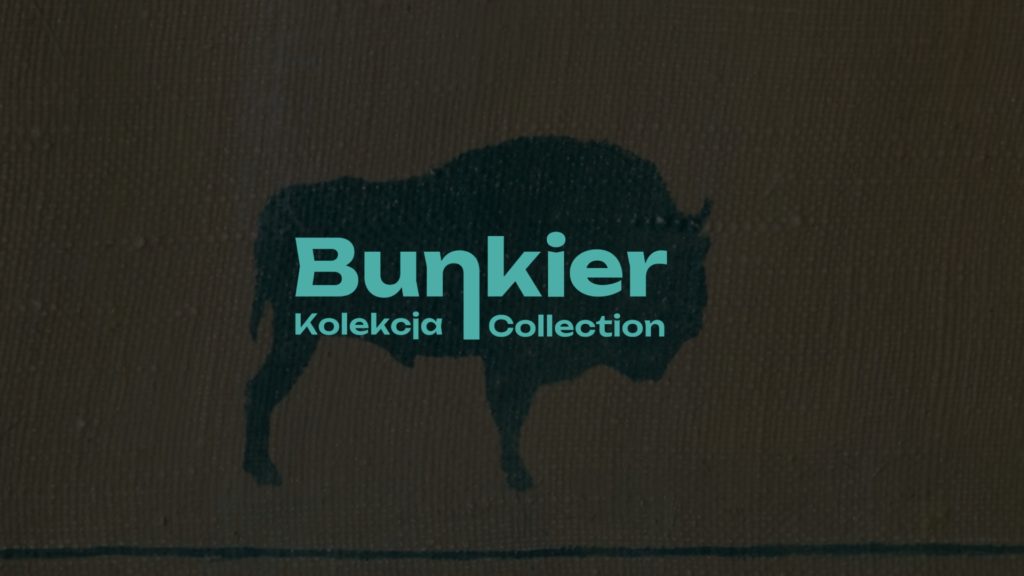Bunkier Sztuki Collection.
Case Variation
Close reading
Works of art entering a collection become part of a network of institutional procedures—restrictive systems of classification, measurement, preservation and display standards.
Their immobilization in museum storerooms encourages the settling of dust, as well as fading and erosion of meanings and emotions that accompanied the creative process. While the underlying force of art is continuous movement and the search for new ways of storytelling, a collection is what remains after the act of creation.
In the six-month-long project Bunkier Collection: Case Variation, individuals affiliated with the Doctoral School of the Jan Matejko Academy of Fine Arts in Kraków undertake an experimental research program to interpret the Bunkier Sztuki Collection. The tools they employ to read selected works from the Collection stem from diverse creative strategies—ranging from conservation-oriented practices to drawing, as well as conceptual and performative actions.
The act of narrating objects, initiated by the doctoral students, reveals new contexts for the Bunkier Sztuki Collection, presenting it as a body of works that demands to be reinterpreted. In the process of activating selected pieces, the past perfect tense inscribed in them transforms into an invigorating subjunctive mood. The dormant potential of works retrieved from the silence of storerooms enters the phase of retesting.
Viewing the Bunkier Sztuki Collection as a starting point is linked to the Gallery’s jubilee celebrations. The year 2025 marks the 60th anniversary of the opening of the Gallery—then functioning as the Municipal Exhibition Pavilion—and the 30th anniversary of the renaming of our institution as the Bunkier Sztuki Gallery of Contemporary Art. On this occasion we would like to present our collection of 450 works by more than 170 artists from 20 countries in a special way. The core of the Collection consists of works acquired after exhibitions and artistic actions held at the Bunkier Sztuki Gallery.
Bunkier Sztuki Collection. Case Variation: Under the Surface Bunkier Sztuki Collection. Case Variation: Audiovision Bunkier Sztuki Collection. Case Variation: Soft speculation archivesBunkier Sztuki Collection. Case Variation
Close reading
8.05–1.06.2025
Concept Author: Magdalena Skrolecka
Close reading refers to the attentive, repeated reading of a short passage of text, a careful examination, a heightened sensitivity to its embedded meanings. As a method of interpretation, it calls for a focus on the particular, and a distancing from an excess of contexts. It allows the passage to be seen as it is – to become familiar, and sometimes even to foster a more personal connection with it. While the term may evoke associations with a classroom exercise, once transferred into the private sphere, it takes on new meanings. The ‘closeness’ implied in the name can suggest a personal bond that sometimes forms between a reader and text. It seems to refer us to those moments when reading becomes an almost intimate act, and the book – a meaningful part of our everyday life.
Michał Stonawski’s series of paintings reflects precisely such moments. Creating the illusion of tangible, paper-based objects, the artist meticulously reproduces books that bear signs of frequent use. The visible scuffs, creases, or stains emphasize the unique character of each copy, pointing to its history – shaped by how and how often it was read, and thus inextricably tied to the history of the reader. These depictions of specific objects are, in a sense, portraits of their owners, with literary and extra-textual narratives layered onto one another in meaningful ways.
In contrast, Magdalena Skrolecka’s works depict the immaterial dimension of the readerly intimacy. They refer to the fleeting images formed in a reader’s mind – a sensory record of literary intuition. Each of the three moving illustrations is based on a specific, individually interpreted fragment from a well-known novel, the result of a carefully conducted close reading. In selecting the texts, the artist focused on themes related to the natural world – often a marginalized aspect of literary works. Through her personal reading, she draws attention to what usually remains in the background, highlighting the power of attentive reading.
Complementing these two perspectives is a space prepared with visitors in mind – an invitation to share their own experiences of close reading, whether based on provided texts or their own reflections, preferences, and intuitions.
Bunkier Sztuki Collection. Case Variation
Bunkier Sztuki & Doctoral School of The Academy of Fine Arts in Krakow
coorganizer

Content-related Supervisor: dr Marta Lisok
Curatorial Assistant (Bunkier Sztuki Gallery): Agnieszka Sachar
Research Team: Józef Gałązka, Maria Kisiel-Jarek, Aleksandra Knychalska,
Anna Litwin, Magdalena Skrolecka, Katarzyna Smożewska, Ewa Szlachetka-Depak


